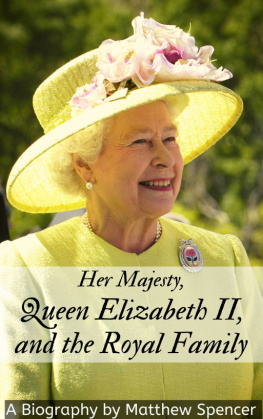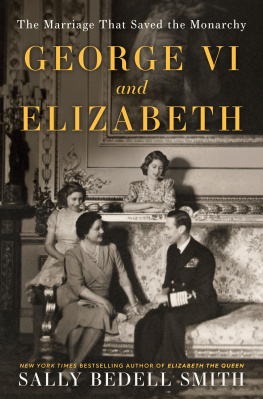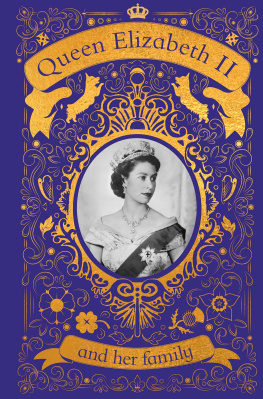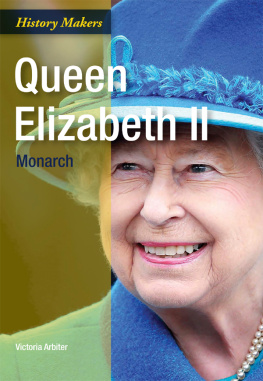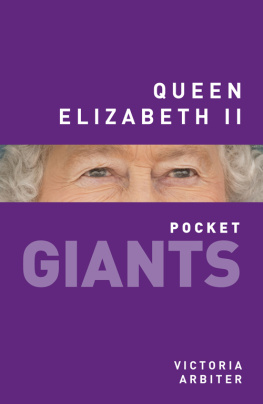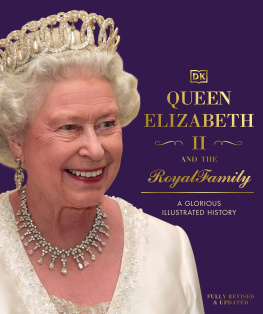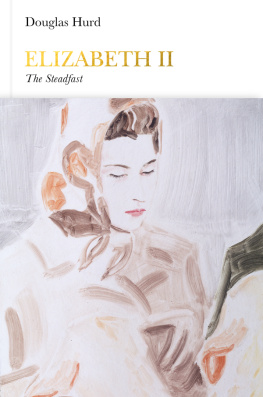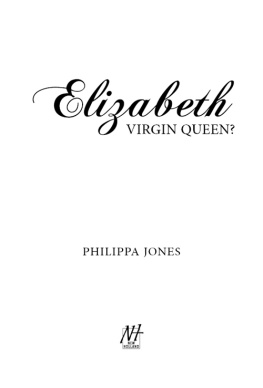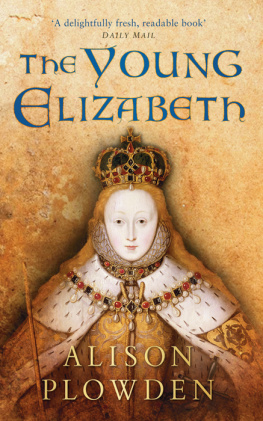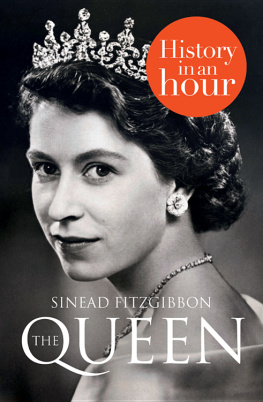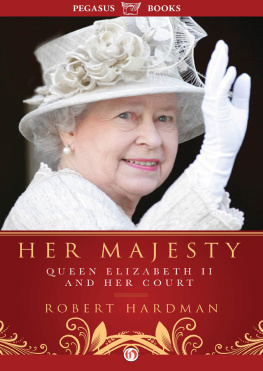Her Majesty, QueenElizabeth II, and the Royal Family
MATTHEWSPENCER
TextCopyright Matthew Spencer
All rights reserved. No part of this guide may be reproduced in anyform without permission in writing from the publisher except in thecase of brief quotations embodied in critical articles orreviews.
Legal & Disclaimer
The information contained in this book andits contents is not designed to replace or take the place of anyform of medical or professional advice; and is not meant to replacethe need for independent medical, financial, legal or otherprofessional advice or services, as may be required. The contentand information in this book have been provided for educational andentertainment purposes only.
The content and information contained in thisbook have been compiled from sources deemed reliable, and it isaccurate to the best of the Author's knowledge, information, andbelief. However, the Author cannot guarantee its accuracy andvalidity and cannot be held liable for any errors and/or omissions.Further, changes are periodically made to this book as and whenneeded. Where appropriate and/or necessary, you must consult aprofessional (including but not limited to your doctor, attorney,financial advisor or such other professional advisor) before usingany of the suggested remedies, techniques, or information in thisbook.
Upon using the contents and informationcontained in this book, you agree to hold harmless the Author fromand against any damages, costs, and expenses, including any legalfees potentially resulting from the application of any of theinformation provided by this book. This disclaimer applies to anyloss, damages or injury caused by the use and application, whetherdirectly or indirectly, of any advice or information presented,whether for breach of contract, tort, negligence, personal injury,criminal intent, or under any other cause of action.
You agree to accept all risks of using theinformation presented inside this book.
You agree that by continuing to read thisbook, where appropriate and/or necessary, you shall consult aprofessional (including but not limited to your doctor, attorney,or financial advisor or such other advisor as needed) before usingany of the suggested remedies, techniques, or information in thisbook.
Table of Contents
Elizabeth Alexandra Mary was borninto the House of Windsor at 2.40am on April the21 st ,1926. She was delivered by Caesarian section. Had she beenborn a decade earlier, she would have been into the House ofSaxe-Coburg-Gotha. However, due to anti-German feeling during theFirst World War, King George V decided to change the family's nameto Windsor.
Along with her younger sister, Margaret,Elizabeth was home educated, with many of their lessons beingdelivered by their much-loved governess, Marion Crawford, orCrawfie as she became known. Their governess was fully committed tothe royal girls, even setting up a guides pack so they that theycould mix with other children of their own age.
She had been hand selected by the QueenMother and seemed to display a similar indifference to academicmatters as the royal household itself. Instead, Crawfie ensured, asfar as was possible (which was not especially far) that her chargesexperienced some touches of everyday life, the sort of things othergirls of their age would see and do. This included a ride on theLondon Underground and a trip to the London Zoo.
When the girls became adults, Crawfieremained a confidant. Now married, and with a small pensionbut a grace and favor cottage, she stayed close to the girls.Elizabeth and Margaret were both regular visitors to their oldgoverness. On one occasion, the newly wed Elizabeth turned upunannounced at the cottage, with Philip in tow. WhilstCrawfie hastily put on a pot of tea, Philip repaired the housesdodgy boiler.
But matters turned sour when the formergoverness was persuaded to write a book about her time with theroyal princesses, which was serialized in the American press. Shewas forced to leave her cottage, and all links to the family werecut. Within royal parlance, the phrase doing a Crawfiebecame known as exploiting the family for financial gain.
Crawfie died, widowed and lonely, in anAberdeenshire nursing home in 1988. The seventy-eight-year-old hadsuccumbed to cancer. In a moving twist, she instructed hersolicitor to send to the Queen a boxful of personal photos,letters, and mementos. These are now stored in the royalarchives.
In her book, which by modern standards canonly be viewed as a fond portrayal of her charges, Crawfieidentified the young Elizabeth as diligent and orderly. WinstonChurchill recalled that she had a mind of her own, but was verysensible. Both identified her sense of duty, which would staywith her right up to the present time.
Elizabeths birth had prompted only moderatepublic interest because, as third in line to the throne, she wasnot expected to become Queen.
Her uncle, Edward, the Prince of Wales, wasfirst in line and any children he produced would overtake her inthe order of succession. After her grandfathers death in 1936,Edward did indeed take the throne. But his abdication over theconstitutional crisis created by his decision to marry a divorcedwoman, Wallis Simpson, changed things dramatically.
Suddenly, her father, Albert became KingGeorge VI and Elizabeth was heir presumptive. Had her parentsgiven birth to a son, he would have become heir apparent, above herin the order of succession.
Both Elizabeth and Margaret spent most of thewar living in Windsor Castle, just a short distance from Londonwhich, of course, underwent enormous and catastrophic bombing.Elizabeth's first radio broadcast was made aged fourteen in 1940and was addressed to evacuated children. Later, in 1943 she madeher first official solo appearance, visiting the GrenadierGuards.
Towards the end of the war, she joined theWomens Auxiliary Territorial Service, gaining the service number230873. She attained the rank of honorary Junior Commander.On VE day, the princesses anonymously joined crowds celebrating inthe streets, and Elizabeth recalled being swept away with the joyof the occasion and the celebrating public. The girlsexpressed a fear of being recognized. Somebody, somewherethat day unknowingly (or perhaps otherwise) joined arms, dancingand singing, with their future Queen.
On her first overseas engagement, made tosouthern Africa with her parents when she was twenty-one years old,she pledged to serve and devote herself to the people of theCommonwealth. Could she have imagined that she would still behonoring this promise 70 years later?
Elizabeth and Phillipmarried on the 20 th November, 1947. Their marriage is the longest ofany British sovereign, and in 2017, they marked their platinumwedding anniversary.
As mentioned in a later chapter, herhusbands sisters were not invited to her wedding. Such was thepower of tradition and established propriety that neither was heruncle, the former King.
A small story from her wedding is that,because the country was still recovering from the impact of war (itwas only two years since VE day), she had to save up her rationcards to get enough material for her dress.
Charles, the Queens first child, was born inNovember 1948, with her only daughter, Anne, following in 1950.
Her fathers health declined badly during in1951, and the young wife and mother frequently stepped in for himon official occasions. In 1952, Elizabeth and Philip undertooka tour of Australia and New Zealand, via Kenya. Her PrivateSecretary, perhaps sensing that the King may not have long to live,carried a Declaration of Accession on the trip.
And on6 th February, 1952, Phillip announced to Elizabeth that she hadjust become the Queen of all her Realms. The couple returnedquickly to England and took up residence in Buckingham Palace. Inkeeping with protocol, we can garner little of the emotional stateof the Queen at that time. Her father had just died, and herGrandmother, Queen Mary, would not survive until theCoronation.
Next page
